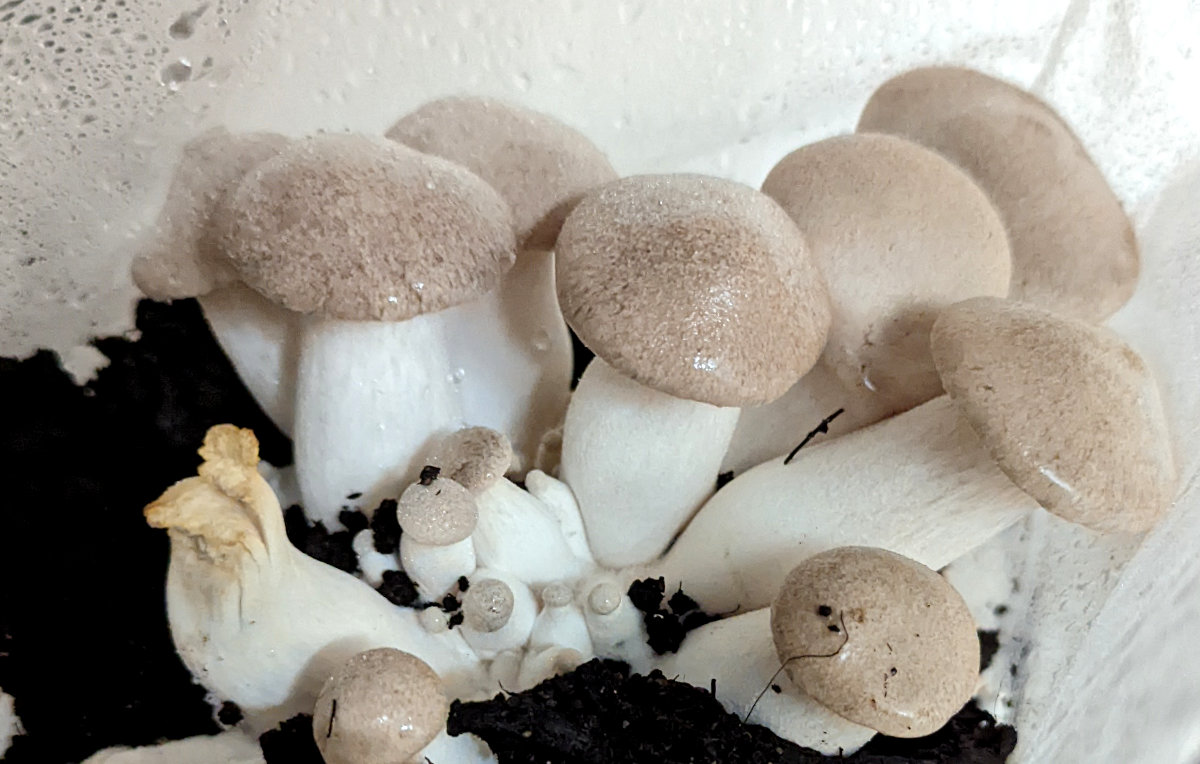Foraging for mushrooms.

Foraging for mushrooms requires great care, they are the group of wild food that are the biggest threat to the health of the forager.
Personally I only forage for around 6 varieties of mushrooms in my woods and 2 of those were some I inoculated fallen oak trees with. I am currently trying to teach my spaniel to find truffles but with limited success.
Do your research and find out what fruits locally and when.
Before you head out to the forest, it is important to do your research and learn about the mushrooms that are edible in your area.
While there are many resources available online and in libraries that can help you with this by far the best and safest way to begin foraging for fungi is to take a course from an experienced mushroom forager.
Below: If you don't know what it is leave it well alone, otherwise you will find yourself in the news like these three.

Choose the right time and place to look for fungi.
The best time to go foraging for mushrooms is in Autumn or the Fall after a rain. The rain helps to loosen the soil and make the mushrooms easier to find. It is also important to choose a place where there is plenty of sunlight. Some mushrooms need sunlight to grow, so they will be more likely to be found in areas with plenty of light.
Be prepared
When you go foraging for mushrooms, it is important to be prepared. Bring a bucket, gloves, a knife, and a field guide with you. You should also wear comfortable shoes and clothing that you don't mind getting wet.
Be careful
It is important to be careful when foraging for mushrooms. Some mushrooms are poisonous, so it is important to be able to identify them before you eat them. There are many resources available online and in libraries that can help you learn how to identify mushrooms.
Here are some additional tips for beginners:
- Start with easy-to-identify mushrooms, such as chanterelles or oyster mushrooms.
- Be sure to cook any mushrooms you forage before eating them. Eating raw mushrooms can make you sick.
- Never eat a mushroom that you are not sure is edible. There are many poisonous mushrooms, so it is not worth the risk.
- If you are unsure about a mushroom, it is always best to err on the side of caution and not eat it.
- If you are foraging for mushrooms in an area that has been sprayed with pesticides or other chemicals, it is best to avoid those mushrooms. Pesticides can make the mushrooms unsafe to eat.
Here is a table of some commonly foraged fungi, along with the best time to find them:
| Fungi Name | Best Time to Find |
|---|---|
| Morel mushrooms | Spring (April - May) |
| Chanterelle mushrooms | Summer - Fall (July - November) |
| Porcini mushrooms | Summer - Fall (July - October) |
| Hen of the woods mushrooms | Fall (September - November) |
| Oyster mushrooms | Year-round (preferably after rain) |
| Lion's Mane mushrooms | Year-round (preferably after rain) |
Please note that the exact timing may vary depending on your location and climate, and it's always best to research and confirm with a local expert before foraging for any wild mushrooms. It's also important to properly identify any mushroom before consuming, as some wild mushrooms can be toxic and dangerous if ingested.
